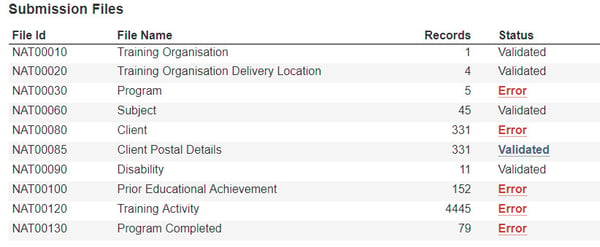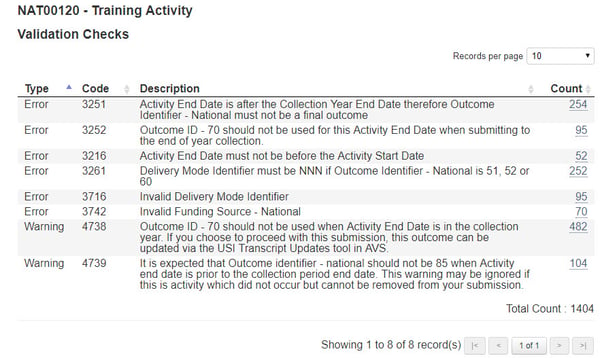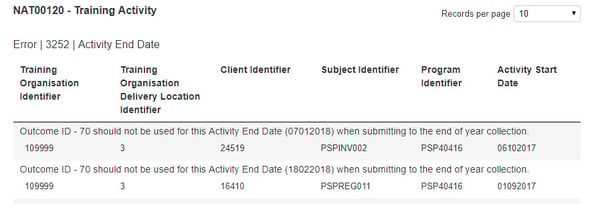What are NAT Files?
If you are reading this blog, you are probably a Registered Training Organisation, and as an RTO, you’d know AVETMISS is the national data standard for collecting and analysing vocational education and training (VET) data throughout Australia.
AVETMISS compliant software applications can extract data files required for validation through the AVETMISS Validation Software or a State Training Authority’s data entry and validation tool. These data files are called NAT Files.
There are 10 files to be submitted to NCVER for the total VET activity data report at the end of each collection year.
Why should I learn to read them?
Most AVETMISS compliant software will have built in validations with links to correct any data that throws an error, but some may not. In this case, you’d want some understanding of where the error is coming from and how to resolve it (either in the Student Management System or directly in the NAT File - which we don't recommend).
Here’s an introduction to reading NAT Files, which will hopefully help you to decipher your data files and fix any critical data issues before your reporting deadline.
Step 1 - Extract the files and Validate them
If you are using a Student Management System, navigate to the AVETMISS export area, and Export all 10 data files.

Validate the files to check for errors and warnings in the AVS (AVETMISS Validation Software).
The tool will return a record count and error indication. If all files have ‘validated’ alongside them, hurrah! You are error free.

If you do see some red - click on the Red Error text alongside the NAT file to see how many errors, you have. Click on the error count text to see the offending records.

The AVS will give you some information to find the error and some indication on what it should/shouldn't be.

Step 2 - Open the file and find the culprit
For this step, you are going to need to refer to the AVETMISS Collection Specifications to find out the position of each field, and the Data Element Definitions to find out the accepted values for each field.
The errors above in my example refer to the Outcome Identifier - National, which we will find in position 72 of the NAT00120 File.
I have numbered each element so we can map it to the NAT File.

Open the NAT File with the errors in a TXT reader, such as Notepad.
Search for the data in the NAT File - use the Status bar in Notepad to identify the position of each field in the file.

The Highlighted column above is Column 72 - as shown in the Status bar. This is the Outcome Identifier column we are looking for.
Search by Client Identifier (Column 3 above) to find the data matching the error report.
Step 3 - Find out what the data should be
Use the data element definitions document to find what the accepted values are for the field.
For example, in my error report, I was trying to submit data that finished in the collection year with an Outcome Identifier of 70. It doesn’t tell me what it should be. I need to search for Outcome Identifier in the data element definitions to identify what an acceptable code would be for this enrolment.

This document also tells you the rules surrounding the element to help you select the right value.
Step 4 - Update the data and try again!
We always say the data should be updated in your Student Management System rather than directly in the NAT File - this is to protect your data integrity. You don’t want to report something in the NAT File and have no record of it in your management software. This can cause trouble down the line, especially when it comes to compliance.
If you do not have a Student Management System, the data can be edited in the file - make sure you don’t throw the other elements out of whack when making changes.
The safest option is always to edit the data at the source.
Conclusion
NAT Files aren’t as daunting as they seem when it comes to understanding how they work. It can be time consuming to consolidate and validate your files without expert tools and advise. Having an AVETMISS Compliant Student Management system which includes NAT File validations and error support in place can make AVETMISS data collection, validation and extraction simple, effective and quick.
We are more than happy to share our experience and help streamline your data collection and reporting processes, get in touch for a free NAT file data score.

